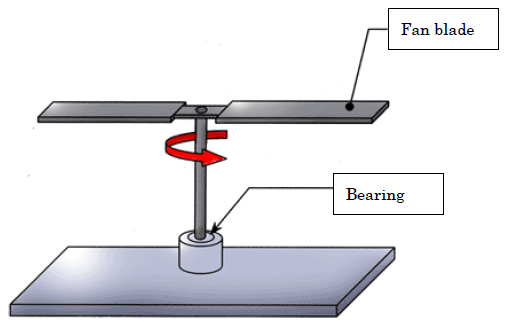How do you define the service life of an Axial Fan?
The service life of an Axial Fan is generally determined by the bearings.
The following diagram is a simple, mechanical illustration of the Fan structure.
The Fan blade will turn smoothly if the bearings are in normal condition. When there is an abnormality in the bearings, however, the friction between the shaft and the bearings will increase until the blade eventually stops turning.
This is the definition of a Fan's service life.
A mechanical illustration of the Axial Fan structure.